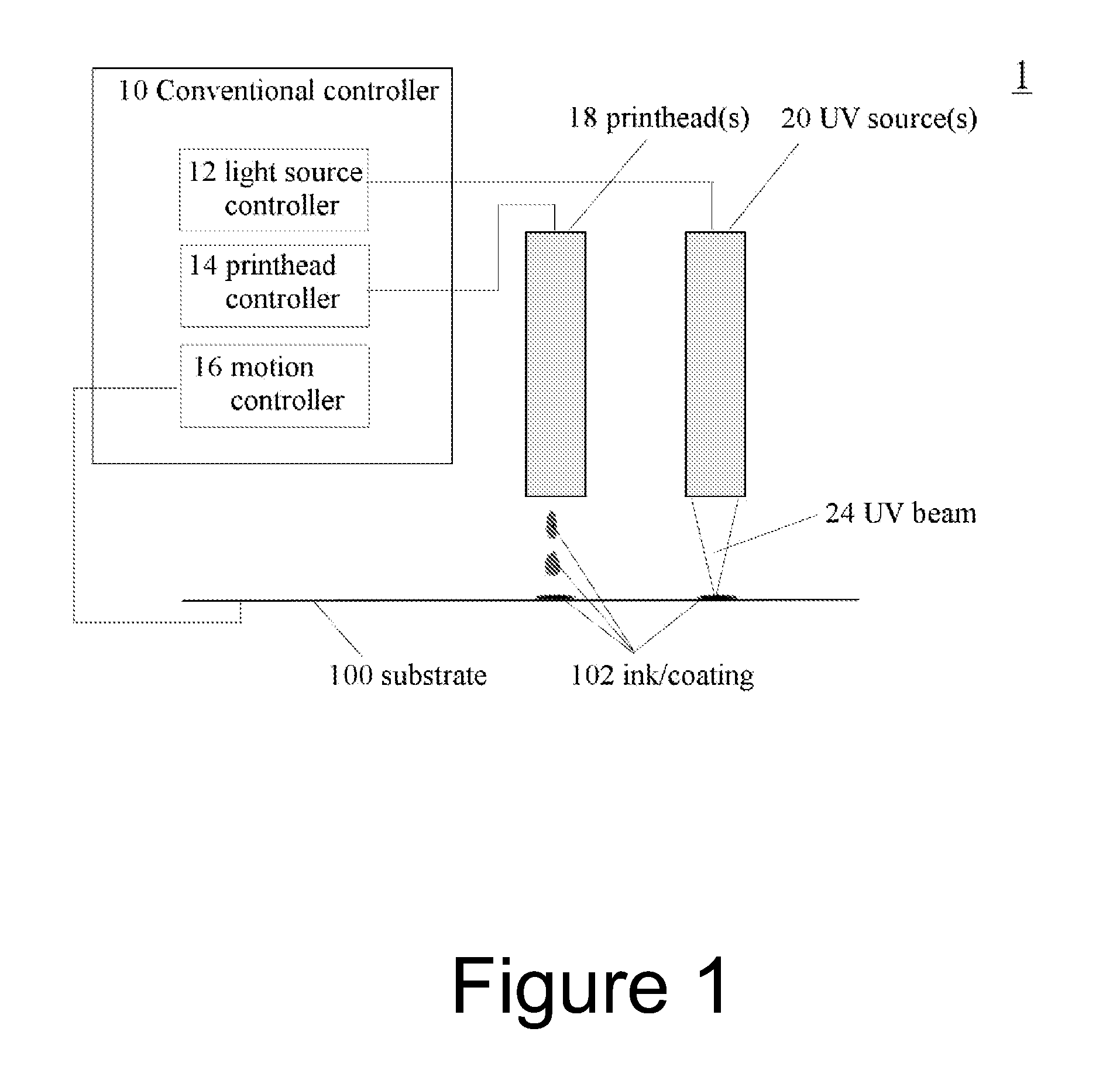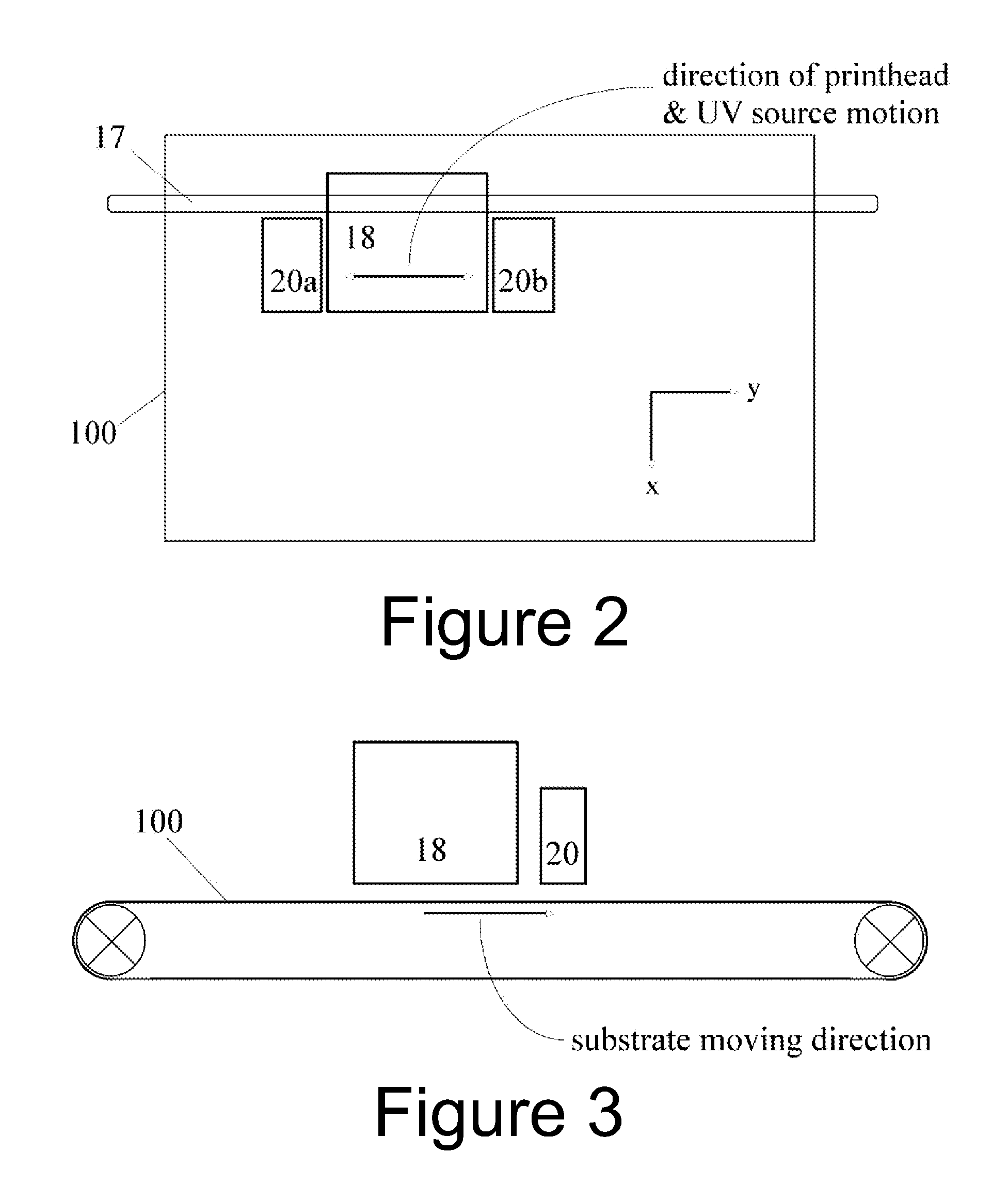Distributed light sources and systems for photo-reactive curing
a distribution light source and photoreactive curing technology, applied in the field of photoreactive curing, can solve the problems of imposing constraints on system design, high heat irradiation from gas discharge lamps, and often considered the most difficult combination of print quality and speed, and achieve the effect of reducing or eliminating the disadvantages of known light sources
- Summary
- Abstract
- Description
- Claims
- Application Information
AI Technical Summary
Benefits of technology
Problems solved by technology
Method used
Image
Examples
Embodiment Construction
[0049]Light sources according to embodiments of the present invention may be used in a UV curing system, and in particular a UV inkjet printer or recording apparatus, such as illustrated schematically in FIGS. 1, 2, and 3. Light sources 20 according to embodiments of the present invention will be described in more detail with reference to FIGS. 4 to 9.
[0050]FIG. 1 shows a simplified schematic diagram of elements of a typical UV curing system 1 for use in digital printing applications. The system comprises at least one print head 18 for jetting ink or coating 102 onto a substrate 100 and at least one light source unit or lamp head 20, which comprise one or more light sources sub-assemblies 220a . . . 220n, as will be described with reference to FIGS. 4 to 9, for generating a UV beam 24 with a desired wavelength and beam profile to illuminate, or irradiate, an area of the coating / substrate 102 / 100 to cause photo-reaction or photo-curing of the ink and coating 102 on the substrate 100....
PUM
 Login to View More
Login to View More Abstract
Description
Claims
Application Information
 Login to View More
Login to View More - R&D
- Intellectual Property
- Life Sciences
- Materials
- Tech Scout
- Unparalleled Data Quality
- Higher Quality Content
- 60% Fewer Hallucinations
Browse by: Latest US Patents, China's latest patents, Technical Efficacy Thesaurus, Application Domain, Technology Topic, Popular Technical Reports.
© 2025 PatSnap. All rights reserved.Legal|Privacy policy|Modern Slavery Act Transparency Statement|Sitemap|About US| Contact US: help@patsnap.com



